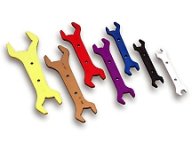srjones
Platinum Member
- Joined
- Mar 6, 2006
- Messages
- 542
- Location
- Columbia County, Oregon, USA
- Tractor
- Mahindra 2015HST & Mitsubish R1500
I'm starting to collect quite a few pins (5/8", 3/4", 7/8" & 1") for the different attachments I have and it always seems like I grab a size too small or big for what I need.
So, inspired by color coded socket sets, I was wondering, is there a color standard for the various sizes of pins?
For example...

So, inspired by color coded socket sets, I was wondering, is there a color standard for the various sizes of pins?
For example...

Last edited:

